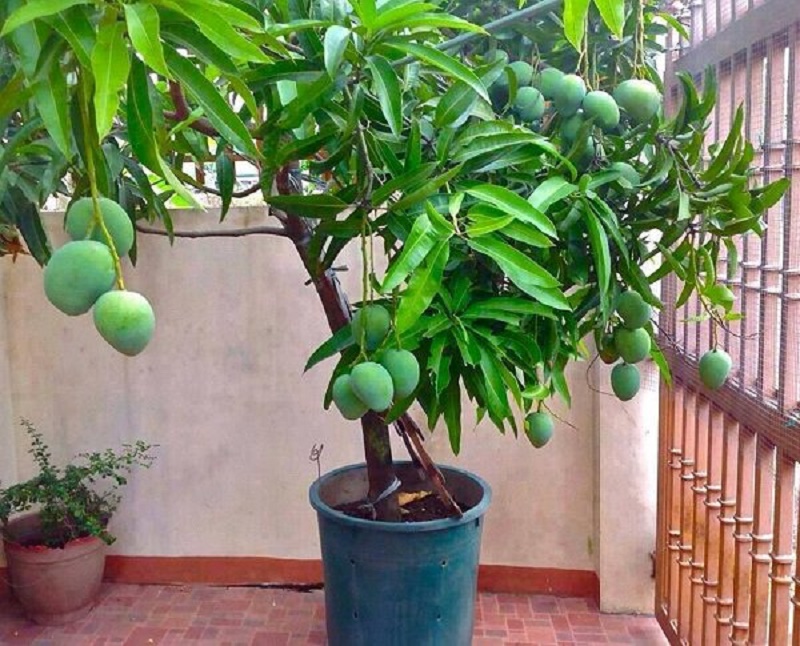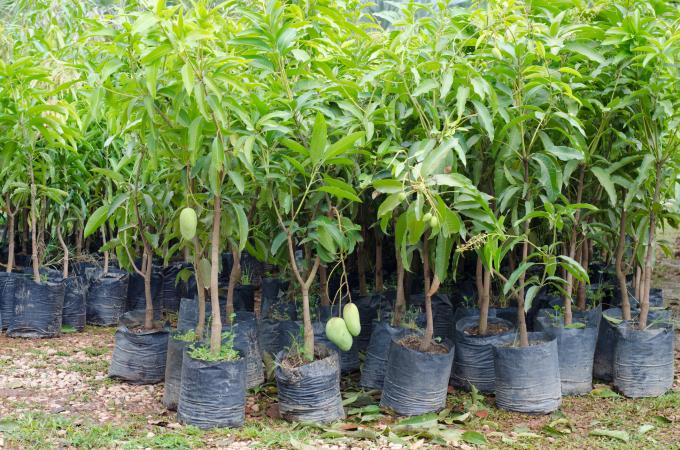
How to grow a mango tree inside your garden
The mango is one of the most popular, delicious and nutritious fruits that you can find today in the market. Its sweet flavor and creamy texture, as well as how simple it is to eat it, make this fruit an ideal food for any occasion. Here, we want you to be able to taste the most natural and sweet mangoes without having to spend money, so if you want to discover how to grow a mango tree, do not miss the following article.
How to grow a mango tree?
Many people are passionate about the trees and fruits that end up decanting by the mangoes, because not only is it a portion of delicious food, very rich in nutrients and ideal for preparing a large number of dishes and condiments, but it is also proven to have incredible properties for the skin. Gardening lovers know that the mango tree is also one of the simplest species to plant. However, concrete steps and several details cannot be ignored so that the processes of choice, preparation and planting are a success.
Before thinking about taking any mango seed and sowing it, you should think about the size of the plant at maturity and the type of fruit it will give. As you know, there are different varieties and flavors of mango, so you will have to consider which is the best option to grow. Then we show you how to plant mango correctly, regardless of where you want to place the tree:
Prepare the mango seed, either with the drying technique or by submerging it in water. You can also transplant a mango root ball if you plan to leave it permanently in open ground.
Now look for a place with continuous solar lighting and remember that space should be large enough so that the tree can grow without problems.
Make sure the area has enough drainage so that there are no puddles and to prevent the seed from rotting before germinating. For this not to happen, it is advisable to hatch the seed in a pot until it becomes a seedling and, subsequently, transplant it to its final position.
Remember that when transplanting a mango from a pot outdoors (in an open field) you must make a hole three times bigger than the size of the root ball so that the roots do not suffocate and rot.
Once you have opened the hole, fill a third of it with a substrate rich in nutrients. Subsequently, place the root ball of the mango over the fertilizer and proceed to fill the sides with more substrate combined with low fertilizer.
Once you have made this step, proceed to water the area under the foliage until all the earth is moistened.
Water the mango regularly, but do not use fertilizers. In this way, the plant will develop to bear fruit and not just to grow its foliage.
Plant mango in a pot
The steps to plant a potted mango bone is similar to those of the open field sowing, but some other indications are required to perform this task:
Make sure you look for the ideal pot and that it is large enough for the mango to develop fully. Depending on the species, they can grow from 9 to 20 meters, so you will need to change the pots as the mango grows.
Study the type of climate in your region, since the mangoes are native to the tropics and develop faster in hot and humid areas. However, they can also adapt to temperate climates.
It is recommended to look for a mother tree that is close to the area where you plan to sow the mango bone because this way you will obtain a species that has developed successfully in your region.
Check the seed to make sure it is in the best possible conditions. To do this, remove the pulp of the fruit and the shell. There you will find the mango bone, but you will have to make sure that it does not have dark spots. Otherwise, it could be infected with fungi.
You can use the technique of drying or submersion in water to accelerate the process of germination of the seed, although it is not necessary to make the seedling sprout.
Once you have the pot, the seed and the substrate (preferably composed of sand, chopped stone and compost), you will start sowing the mango bone.
Fill the pot completely with the substrate and then dig a 20-centimeter hole.
Introduce the seed to the bottom of the hole with the navel of the pipe down.
Next, it is only necessary to carry out irrigation until the earth becomes wet without generating water-logging. You must do this daily for about four weeks until the seedling comes to the surface.
Mango tree care
The care for the mango tree is usually basic but must be followed to the letter so that the plant develops to full maturity and without health problems. For this it is necessary to follow these tips:
Pay special attention to climate and temperature: as we have said before, the mango is native to very hot and humid regions, so you have to pay attention and avoid, at least if you have planted in a pot, which is exposed to frost or temperate-cold temperatures since this would hinder their growth.
The soil: you should know that the mango tree does not need particularly fertile soil, because they tend to adapt well to land with low nutrients. However, if you can add a little fertilizer, your tree will thank you and grow much stronger and healthier. It is recommended to pay only twice a year, during spring and summer.
Direct sunlight: make sure that the place you choose to plant the tree receives sunlight throughout the day because it will give them the energy to grow healthier and faster.
Do not forget the hydration: the mango is a kind of tree that needs to stay hydrated, so remember to water it frequently but always without flooding the area.






